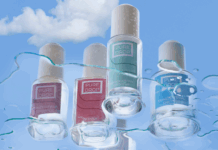Following the recently published UFC Que Choisir survey highlighting the presence of so-called "harmful" substances in cosmetic products, Febea (Fédération des entreprises de la beauté) has issued a reminder of several points concerning safety, regulations and consumer information.
The Fédération des entreprises de la beauté, the trade association for cosmetics manufacturers, reminds us that all cosmetic products sold in France and Europe undergo a rigorous safety assessment by a qualified toxicologist before they are placed on the market, in accordance with regulation (EC) n°1223/2009.
The ingredients used are authorized and, where necessary, re-evaluated by the Scientific Committee on Consumer Safety (SCCS), an independent body of the European Commission. CSSC recommendations are regularly updated to incorporate the latest scientific advances.
Danger versus risk: an essential distinction
Febea stresses the importance of remembering the difference between hazard (intrinsic property of a substance) and risk (probability of an effect based on actual exposure): an ingredient may present a hazard at a high dose, but the risk to the consumer depends on the quantity actually present in the product and the way it is used.
Safety assessments systematically take this notion of risk into account, which is something that rating applications or media rankings for cosmetics cannot do.
Vigilance and research on endocrine disruptors
To date, there is no official list of substances proven to be endocrine disruptors in cosmetics, apart from the Echa list of 16 families of substances, all of which are banned in cosmetics.
Many substances are "suspected" on the basis of chemical affinities, but it is extremely complex to prove or disprove their endocrine-disrupting nature, in the absence of fully validated scientific methods to date.
The cosmetics industry is one of the few sectors to actively fund research on this subject, notably via the Pepper public-private platform, which aims to validate reliable methods for identifying endocrine disruptors and accelerate European research in this field.
Rating applications: the need for transparency
"Rating applications, such as UFC Que Choisir's, have a role to play in informing consumers. However, it is essential that they respect the recommendations of the Conseil National de la Consommation (CNC), to which UFC has actively contributed. These applications must be transparent in their criteria, fair in their presentation, and not mislead consumers with overly globalizing or anxiety-inducing judgments.says Febea. Some applications rate ingredients solely on their potential hazard, without taking into account the actual concentration in the product, which can lead to erroneous or exaggerated interpretations of the actual risk to the consumer."
The composition of cosmetic products also takes into account changes in regulations (new authorized ingredients, restricted ingredients, etc.).
It is constantly evolving according to the risks identified or the availability of new data.
A sector committed to safety and transparency
Febea would like to emphasize that cosmetics are among the most closely supervised and controlled consumer products in Europe. Continuous innovation in the sector enables us to constantly improve the safety of formulas, to reformulate where necessary, and to adapt doses as closely as possible.
Febea and Cosmetics Europe are making available an open database, listing over 29,000 ingredients used in cosmetics and providing scientifically verified information to enable consumers to make informed choices.
To make searching easier, these databases have been converted into mobile applications, Claire (French application) and Cosmile Europe (European application available in 13 languages), which are fed by the same sources and are intended to become one.
Aimed primarily at cosmetics professionals, to provide them with accurate, reliable information on cosmetic ingredients and help them respond to consumers, these applications are free of charge and can be used by consumers.







